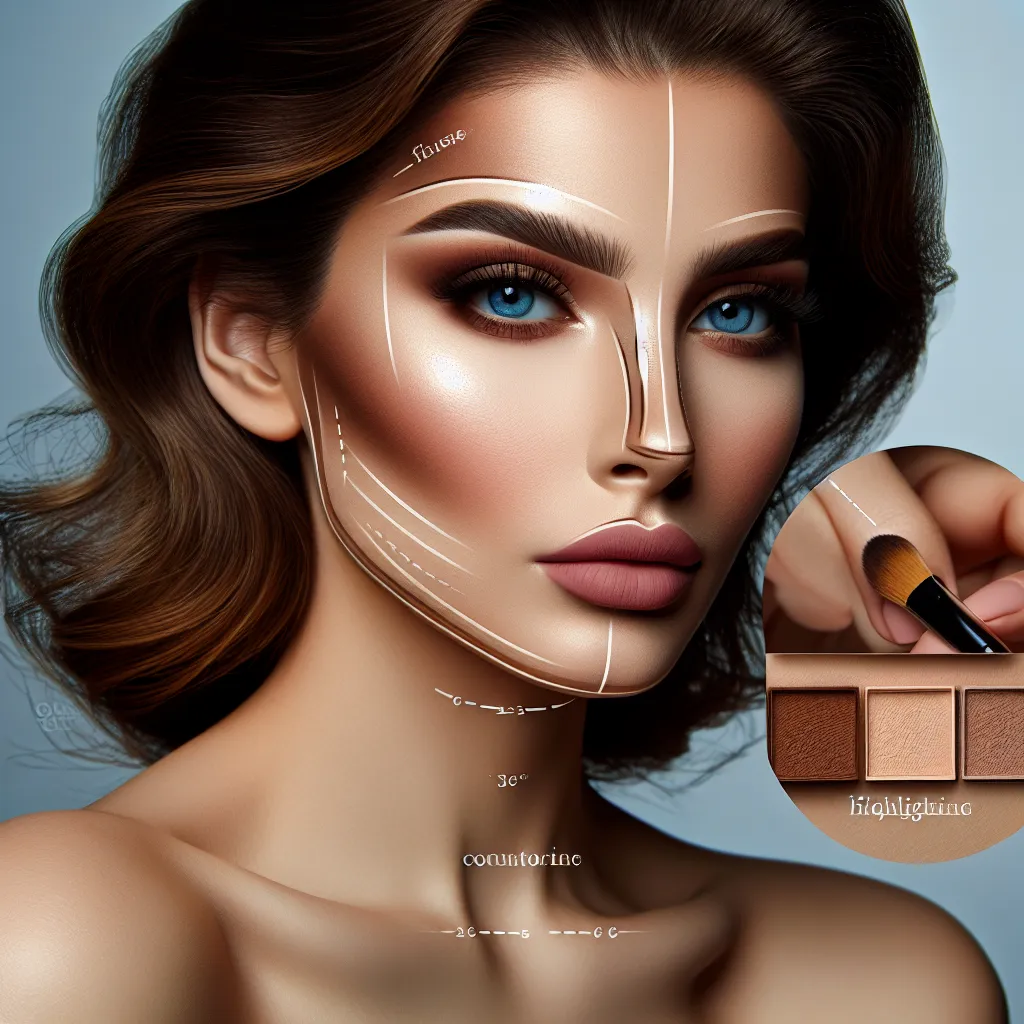Mastering The Art of Cream Contouring for a Natural Look
Revolutionary Techniques in Contouring and Highlighting have transformed the way we approach makeup application. Mastering The Art of Cream Contouring for a Natural Look has become a cornerstone of modern beauty routines. When it comes to adding depth and dimension, eyeshadow plays a crucial role in accentuating the eyes and creating a cohesive look.
Using the right eyeshadow shades can enhance the contours of the face, bringing out its natural structure. Inglot Cosmetics offers a wide range of eyeshadows that are perfect for contouring and highlighting. Their selection of creamy, blendable formulas allows for seamless application and a natural finish. By strategically applying eyeshadow in the hollows of the cheeks, along the jawline, and on the temples, you can achieve a beautifully sculpted look.
To learn more about how eyeshadow can take your contouring and highlighting to the next level, visit eyeshadow and explore their range of versatile eyeshadow products.
Remember, mastering the art of cream contouring with eyeshadow is all about enhancing your natural features and creating a radiant, flawless finish.
Mastering The Art of Cream Contouring for a Natural Look
Mastering the art of cream contouring is a revolutionary technique in the world of makeup, allowing for a natural and flawless look. Cream contouring has gained immense popularity due to its ability to provide a subtle definition to the facial features without appearing cakey or overdone. By strategically using cream contour products, one can sculpt and define the face to enhance its natural structure. This technique involves using creams that are a few shades darker and lighter than your skin tone to create shadows and highlights, mimicking the natural play of light and shadows on the face.
One of the key aspects of mastering cream contouring is choosing the right products that blend seamlessly into the skin. Opting for cream products with a smooth and blendable texture is crucial for achieving a natural finish. Additionally, mastering the art of cream contouring involves understanding the facial structure and knowing where to apply the darker and lighter shades to accentuate the features subtly.
Furthermore, the technique of cream contouring also involves the use of the right tools for blending. Beauty sponges and dense, angled brushes are popular choices for achieving a seamless blend with cream contour products, ensuring that the end result is natural and not streaky.
In conclusion, mastering the art of cream contouring for a natural look involves the thoughtful selection of products, an understanding of facial anatomy, and the use of proper blending techniques. With the right skills and products, one can achieve a sculpted and radiant look that appears effortlessly natural.
Innovative Highlighting Methods to Brighten Your Features
Revolutionary techniques in contouring and highlighting have brought about a major shift in the makeup world, allowing individuals to enhance their natural features like never before. One of the most innovative aspects of this trend is the development of new highlighting methods that are designed to brighten and accentuate the face in unique ways.
Traditional highlighting typically involves the use of shimmering powders or creams applied to the high points of the face, such as the cheekbones, bridge of the nose, and cupid’s bow. However, modern techniques have expanded upon these principles to introduce new and creative ways to achieve a luminous glow.
One of the most exciting innovative highlighting methods gaining popularity is „underpainting,” which involves applying a light-reflecting product underneath foundation. This technique creates a subtle, lit-from-within radiance that looks incredibly natural and seamless. By layering the highlighter beneath foundation, the luminosity appears to emanate from within the skin, giving off a soft, ethereal glow.
Furthermore, the concept of „color correcting highlights” has emerged as a game-changer for many makeup enthusiasts. By using specific shades of highlighters to counteract undertone discoloration, individuals can effectively brighten targeted areas of the face. For instance, a peach-toned highlighter can neutralize dark circles under the eyes, while a lavender-toned highlighter can combat sallowness and dullness, resulting in a more vibrant and even complexion.
Additionally, „stripping” or „layering” multiple highlighters in different textures and shades has become a trend, allowing for a customized and multidimensional glow that catches the light from every angle. By strategically placing different formulations of highlighter, such as liquids, creams, and powders, individuals can create a bespoke radiance tailored to their unique facial structure and personal style.
These innovative highlighting methods represent a shift towards a more personalized and creative approach to makeup application, empowering individuals to experiment with new techniques that elevate their natural beauty. By embracing these revolutionary trends, makeup enthusiasts can discover exciting ways to illuminate and accentuate their features, achieving a radiant and sculpted look that enhances their individuality.
Revolutionizing Contouring: The Latest Tools and Techniques
Revolutionizing Contouring: The Latest Tools and Techniques
When it comes to the art of makeup, contouring and highlighting have become indispensable techniques for creating dimension and enhancing facial features. With the ever-evolving beauty industry, revolutionary methods and tools have emerged to take contouring to the next level.
One of the latest breakthroughs in contouring is the introduction of 3D contouring techniques. This innovative approach goes beyond traditional contouring by incorporating strategic placement of darker and lighter shades to mimic natural light and shadows on the face. By utilizing this advanced method, makeup artists are able to sculpt the face with unparalleled precision, resulting in a more realistic and refined look.
In addition to groundbreaking techniques, the beauty industry has seen a surge in the development of specialized contouring tools. From contouring brushes with ergonomic designs to blending sponges engineered for seamless application, these tools have redefined the contouring experience. Moreover, the integration of technology into makeup tools has led to the creation of contouring devices that analyze facial contours and provide customized guidance for effortless application.
Furthermore, the advent of contouring kits featuring an array of shades tailored for different skin tones has democratized the art of contouring, making it accessible to a wider audience. These kits often include step-by-step instructions and diagrams to empower users to master the art of contouring at their own pace.
In conclusion, the world of contouring and highlighting continues to evolve with revolutionary techniques and innovative tools. As makeup artists and beauty enthusiasts embrace these advancements, the possibilities for creating sculpted, luminous looks are endless.
Contouring and Highlighting Mistakes to Avoid
Revolutionary techniques in contouring and highlighting have taken the beauty world by storm, allowing individuals to sculpt and enhance their facial features with precision. However, amidst the quest for a perfectly chiseled look, it’s important to be aware of the common contouring and highlighting mistakes that can yield less-than-desirable results.
One of the most prevalent errors in contouring and highlighting is using the wrong shades. Using a contour shade that is too warm or too cool for your skin tone can result in a muddied or unnatural appearance. Similarly, using a highlighting shade that is too light or too dark can create stark lines that are stark and unflattering.
Another mistake to avoid is failing to blend properly. Harsh lines and unblended edges can make the contour and highlight appear heavy and obvious, defeating the purpose of a natural-looking sculpted effect. It’s essential to blend seamlessly to create a soft transition between the contoured areas and the rest of the face.
Over-application of product is also a common pitfall. Applying an excessive amount of contour and highlight can lead to a heavily caked-on look that appears unnatural, especially in natural lighting. A light-handed approach is key to achieving a subtle, sophisticated result.
Lastly, neglecting to consider individual face shapes when contouring and highlighting can lead to less flattering results. Different face shapes require different contouring and highlighting techniques to accentuate features appropriately.
By being mindful of these common mistakes, individuals can elevate their contouring and highlighting game, achieving a flawlessly sculpted look that enhances their natural beauty.

